Parents and Siblings
Abraham Ernest Kessler was the son of Samuel and Bertha (Beti) Charipper Kessler.
Samuel and Bertha were immigrants from Galicia (then Austraian-Hungary, now western Ukraine). Samuel and Bertha were married and had their first child in Galicia. After arriving in the United States, around 1894, with their son Lipmann, Samuel and Bertha had at least six more children, with only three (Abe, Edith, and Morris) surviving to full adulthood. They first lived on the Lower East Side of Manhattan, and then eventually settled in Brooklyn, NY.
Early LIfe
Abraham Ernest Kessler was born on February 5, 1896. His family then lived at 167 Allen Street. His father was 30 years old and his mother 28 at the time of his birth. His older brother, Lippman, was about nine years old.
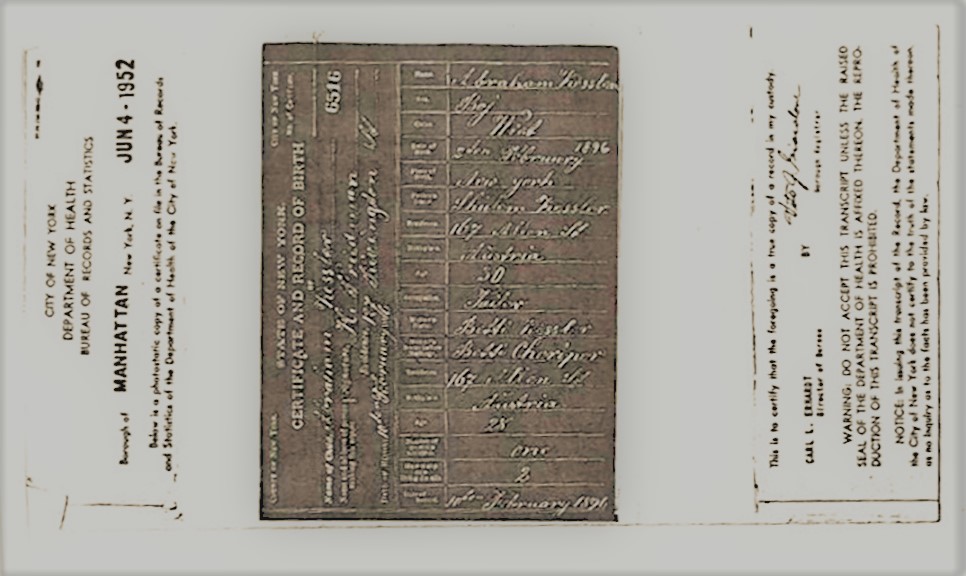
In 1896, the Lower East side was packed with immigrants and that summer there was a terrible heat wave. It lasted for over 10 days, killing almost 1500 people. With no air conditioning and little circulating air in the tightly crammed tenements, people succumbed to the terrible heat. The government did little to help the people and there was a ban on sleeping in the parks. They did, however, probably sleep on the fire escapes. That was the setting for Abe’s start in life.
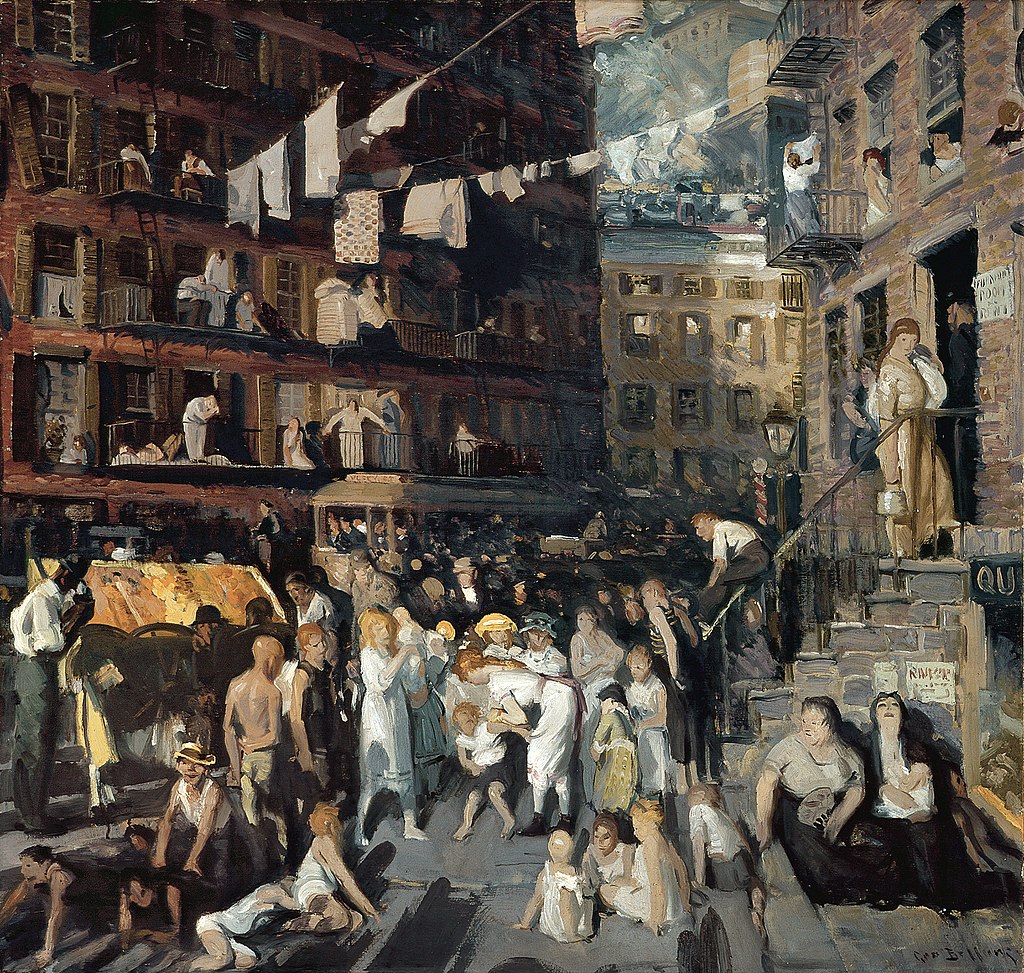
His sister, Edith, was born a year after him in 1897. Then in 1899, his mother gave birth to twin boys, Benjamin and Israel, both of whom died before 2 years of age.
By 1900, his family left the Lower East Side and now lived at 22 Hicks Street, in Brooklyn. It was here that his brother, Morris, was born in 1905. Also born here was Frederick (b. 1902) who, once again, died before his second birthday.
In 1907, Sam and Bertha purchased a row house at 1037 Herkimer Street. Abe’s father, Samuel, was a tailor. Abe’s mother was known as “the Mayor of the Block”, according to the memories of her granddaughter, Florence.
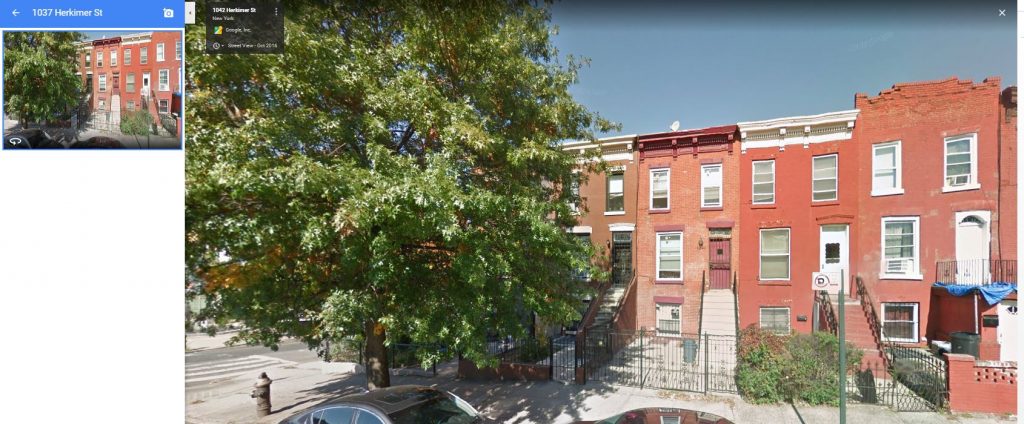
In 1908, Abe lost his oldest brother, Lippman, to a tragic murder / suicide. Abe was about 12 years old when this occurred. We wonder how this tragedy, and the death of 3 baby siblings, affected his teen-age years and adulthood.
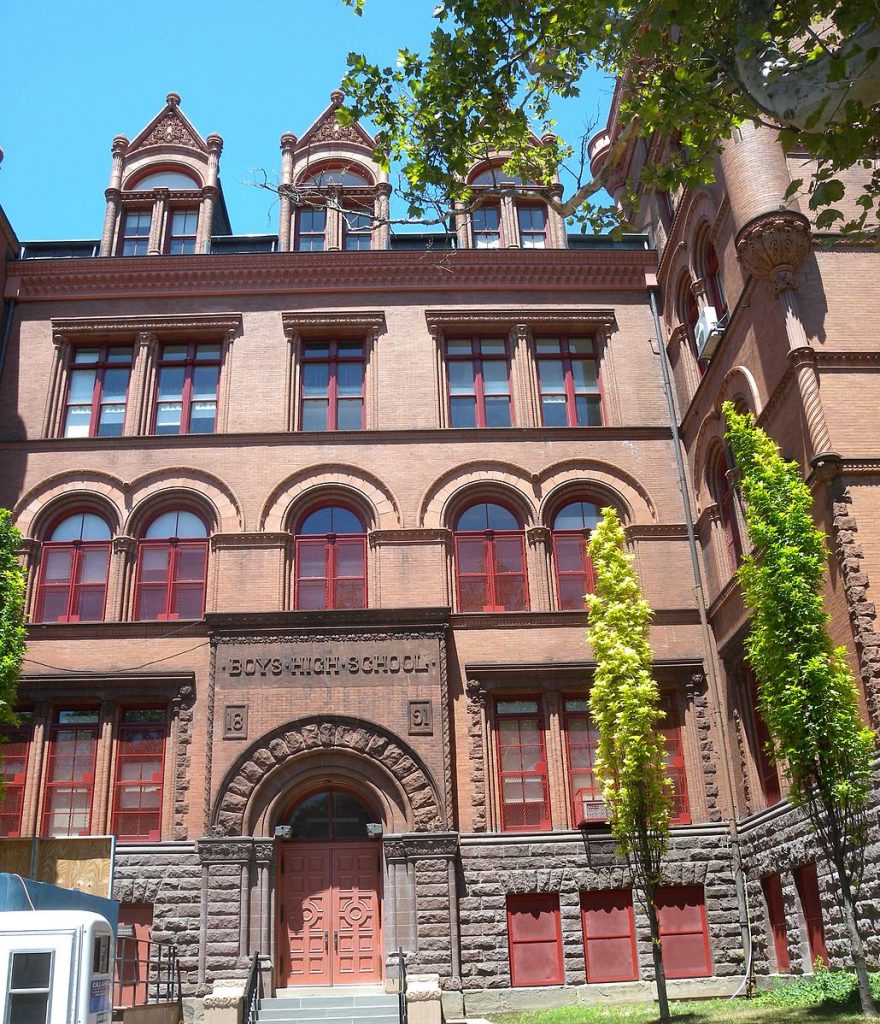
Abe attended to Boy’s High School in the Bedford-Stuyvesant section of Brooklyn. Built in 1891, today the building is on the list of the U. S. National Register of Historic Places.
College Years
At the start of World War I, Abe and a friend went to Canada to enlist because a lot of Americans wanted to get into the fray. Since Canada was part of the British Empire, when Great Britain declared war on Germany in 1914, Canada was spontaneously pulled into the war.
Since he couldn’t get into the Canadian Army, he decided to go to college. His family was very poor and Abe claims that his parents did not know that he was going. He passed the exam for West Point but failed the physical – he claimed that it was due to him being malnourished. In hindsight, he said it was a good thing he did not get it, because he probably would have been a second lieutenant in the infantry. The troops in this division did not have a very long lifespan due to all of the charges against German machine gun nests. He also said that he got a scholarship to Lehigh University, but did not go.
He attended from City College where he studied business education, and is listed as a graduate in the spring of 1917. Abe won several academic prizes while attending City College. One award was a second place win for the Ketchum Prize, proficiency in political science. Abe also claimed to have known the actor Edward G Robinson, who was a City College classmate.
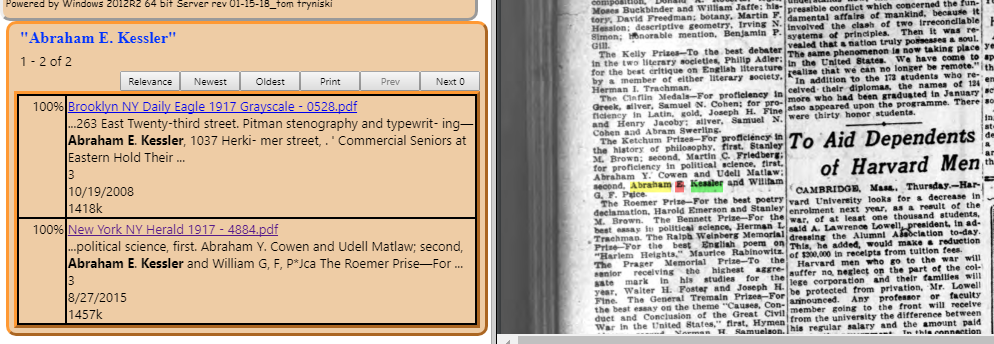
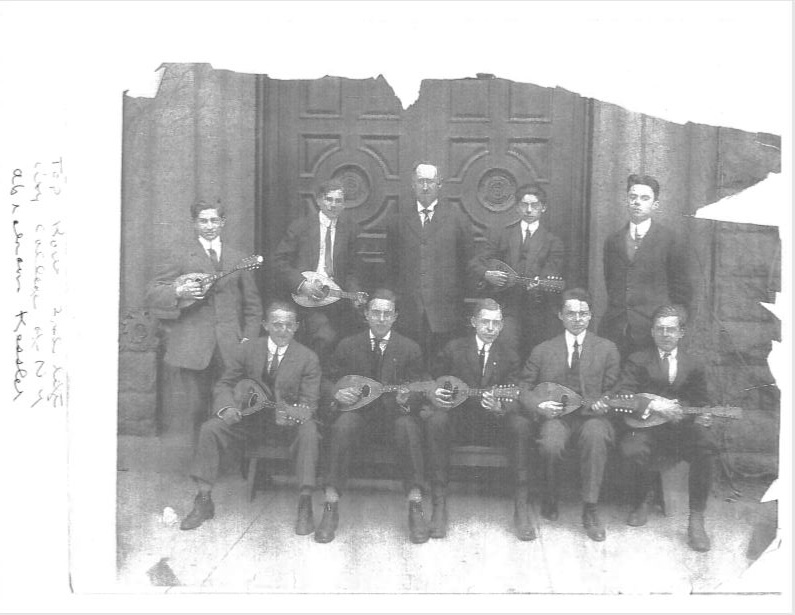
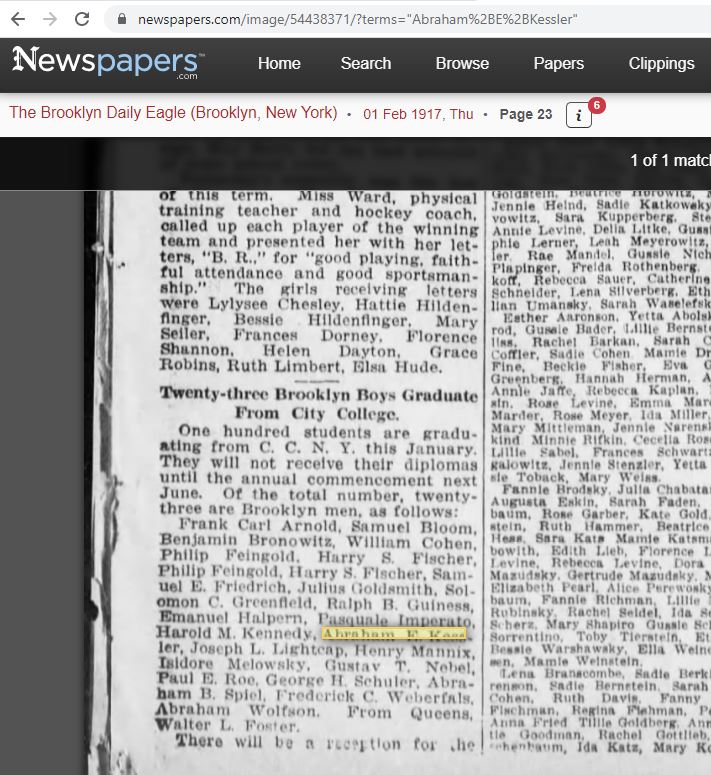
Early Career
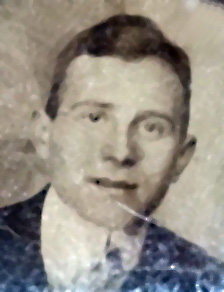
In January 1917, he was listed as a teacher in training for Pitman stenography and typewriting in the Brooklyn Eagle Newspaper. One of his female relatives was one of his students.
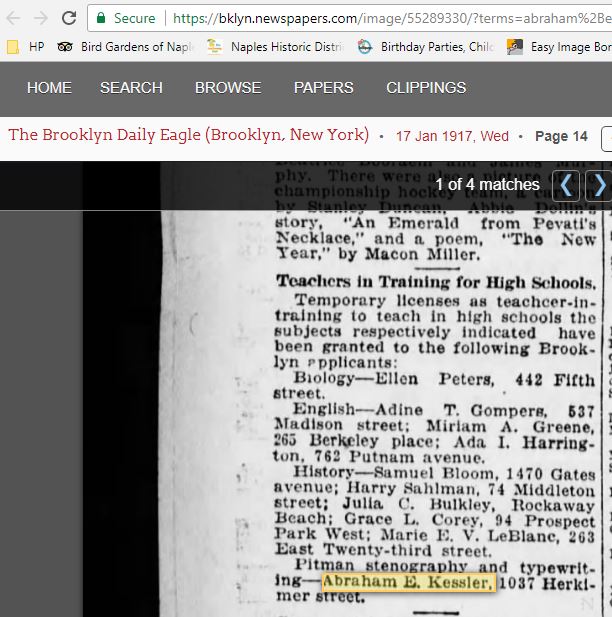
Marriage
On November 10, 1917, at age 23, he married Anna Feldman, age 19. The ceremony was performed by Rabbi Chaskel Lewinter. Up until the wedding he was living at 1037 Herkimer Street, in Brooklyn. When they married, Anna was about 7-months pregnant.
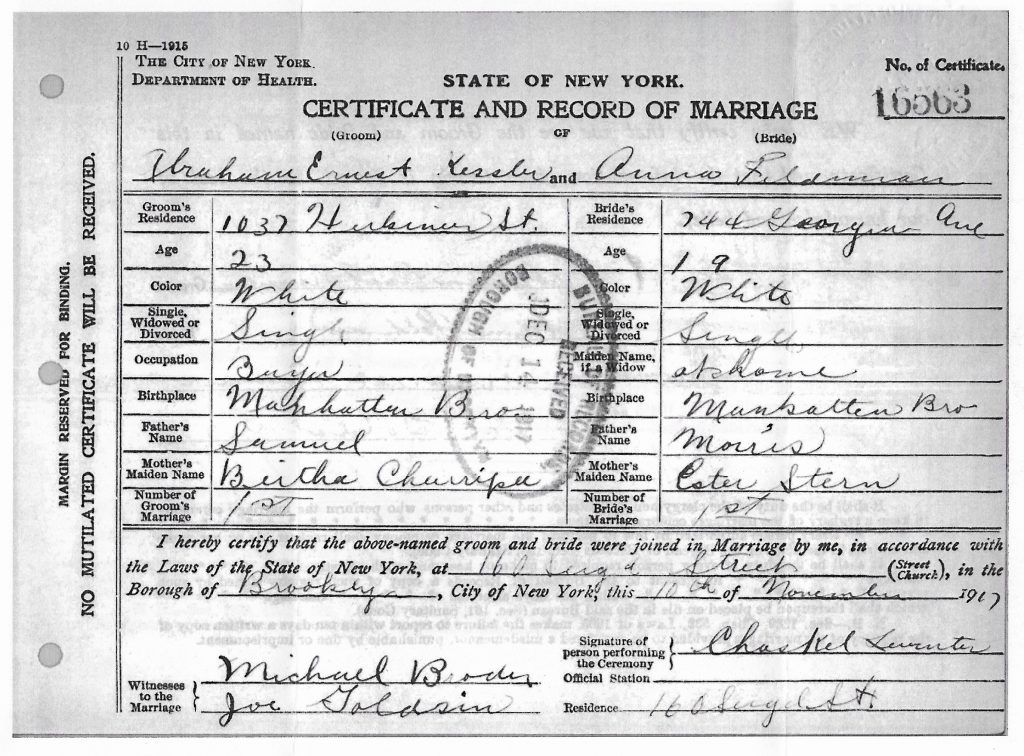
Abe and Anna had a baby girl born, January 15, 1918, who was put up for adoption. We have no idea why she was put up for adoption and why or how they picked the family they did. *
In the Army
In his youth, Abraham had white-blond hair. He called himself a toe-head. He grew to be about 5’6″ and was always slender, with blue eyes. He had an adventurous spirit.
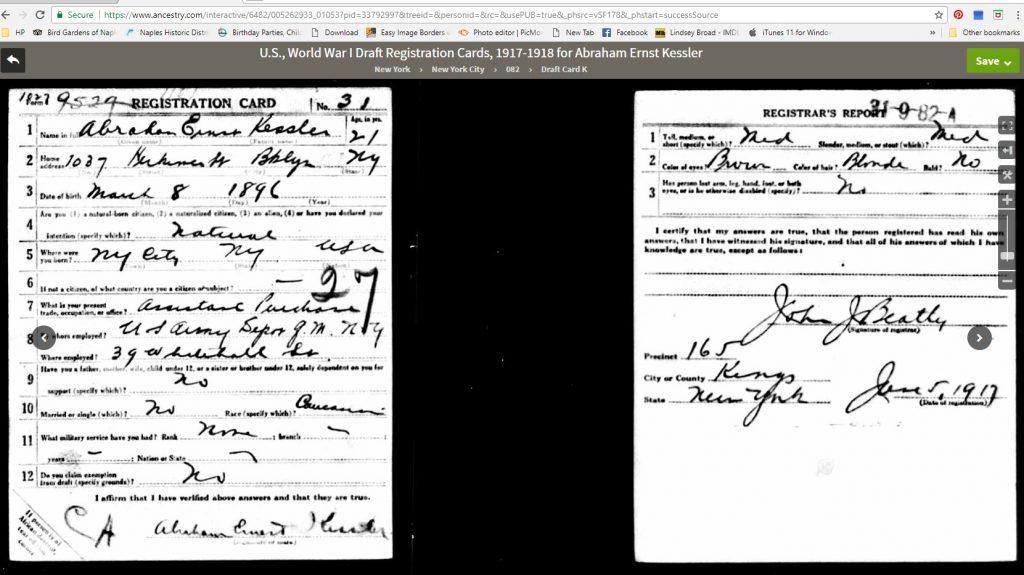
In June of 1917, his draft card lists him as an assistant purchasing agent for the US Army in New York. He must have been working as a civilian since he was not inducted into the Army until June 21, 1918. He was stationed with the QMC (Quartermaster Corps) Detachment New York Depot as a private, which was the same unit he was working in in 1917.
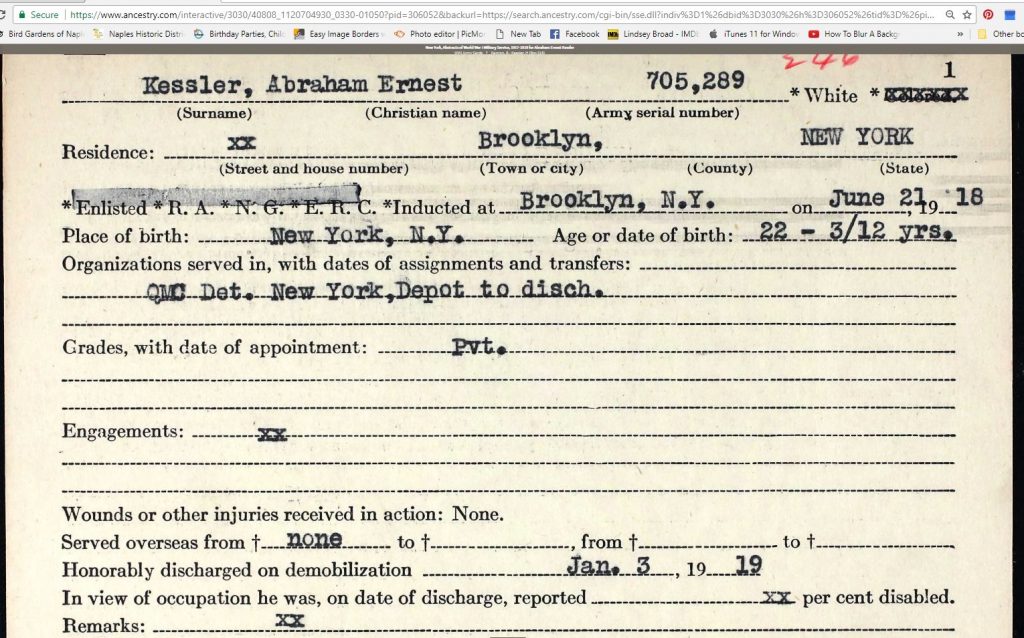
He was honorably discharged on demobilization on January 3, 1919. (WWI ended on Nov. 11, 1918.)
He told his grandson, Arthur, that while in the army, he flew in a blimp looking for German subs off the coast of Newfoundland. We cannot verify that. He also said the he reported to Ft. Slocum in New Rochelle, the city that Florence and her family lived in from the mid-fifties to the mid-seventies. According to his grandson, Steven, He also was in a sort of biplane and would use trigonometry to time the release of bombs to the ground of foreign enemies.
Art remembers his grandfather telling the following story about his time in the Army. It seems that one day his unit sergeant asked the troops to measure the height of a flagpole. Soldiers shimmied up the pole to get a rope to the top for the measurement. None of the troops were able to get to the top. Poppy said the he knew algebra so he could determine the pole’s height. We don’t know if his sergeant took him up on the offer. That night, though, someone came to wake him to pack up and leave immediately. Apparently, there was a plot to kill him for being a smart alack.
Post-Army Work
Upon leaving the Army, he was the private secretary to a timber magnate in Finland. Later on, he taught courses for several years in a Brooklyn high school.
In December of 1919, he applied for a passport. He spent three months overseas leaving his wife and new daughter, Esther, behind. He returned to the States at the beginning of April 1920. He sailed home out or Norway on the Bergensfjord.
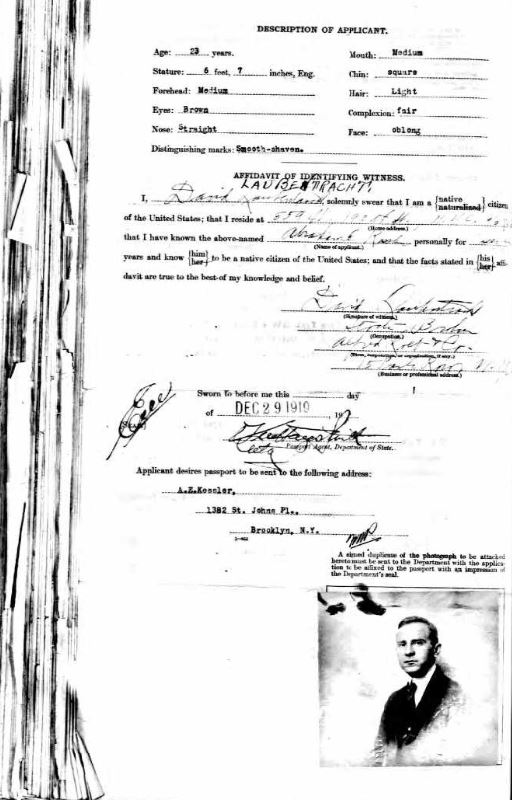
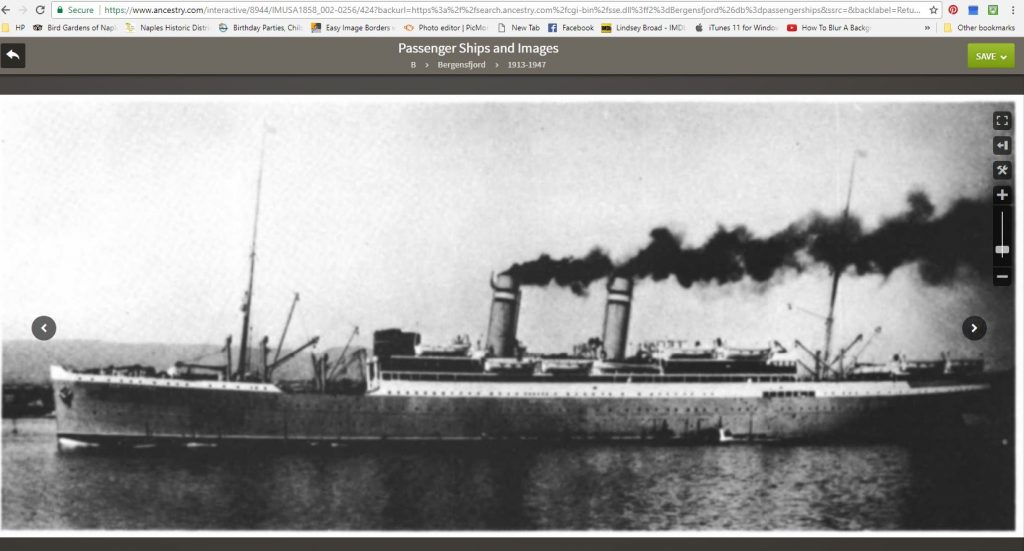
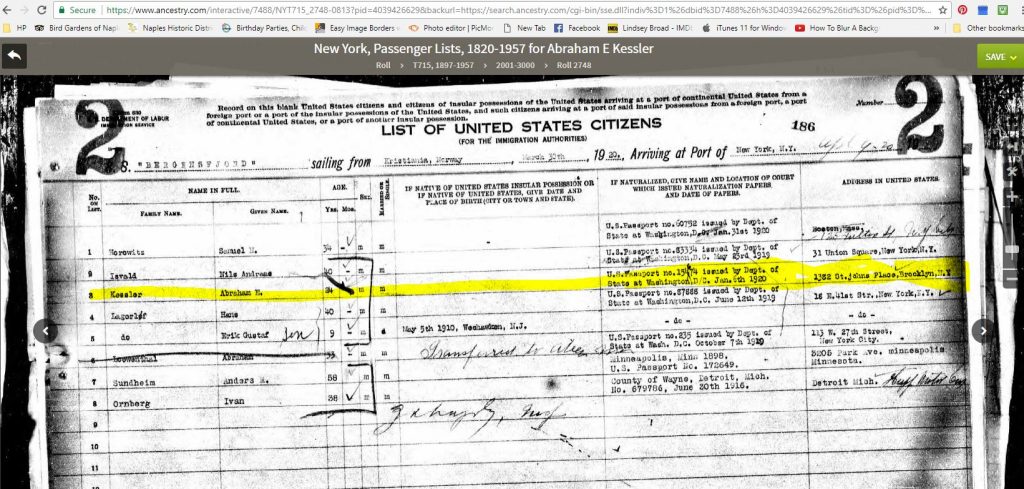
Abraham also worked in the stock exchange. He and a friend had a seat on the NY Stock Exchange, which was lost during the 1929 crash.
Family Life
After giving up their first daughter for adoption, Abe and Anna had two more daughters, Esther, born in 1919, and Florence, born in 1922.
By the 1925 mini census, Abraham and Anna lived at 128 St. Johns Place, Brooklyn, with their daughters.
After 1929, they were homeless for about six months and went to live with Abe’s parents.
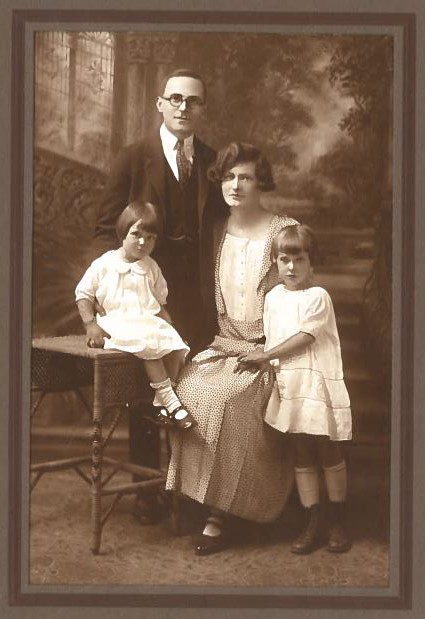
The family had a 200-acre summer place in Milford, PA. Poppy (Abe), as he was called by his grandchildren, purchased a Sears Roebuck kit house constructed on the site, which they used during the summer. Unfortunately, it burned down, and Abe sold the land.
In the 1940, Census, Abe and Anna, along with their daughters, were living on 934 Carroll Street in Brooklyn, NY.
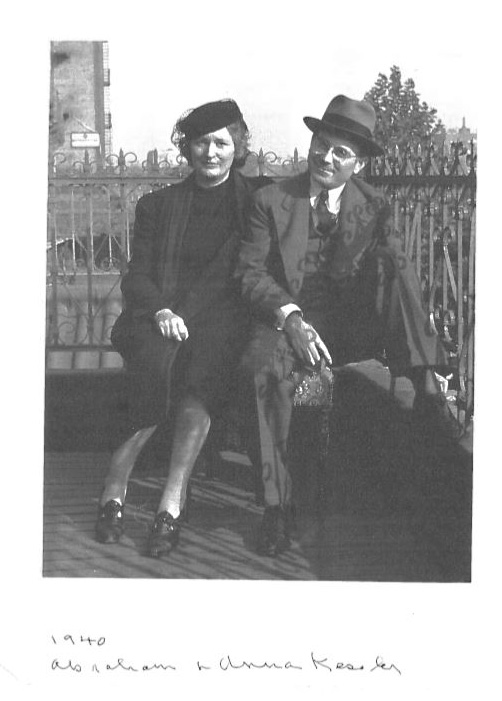
In 1942, he listed Anna on his WWII Draft Card as the person who would always know his address. He was 46 years old.
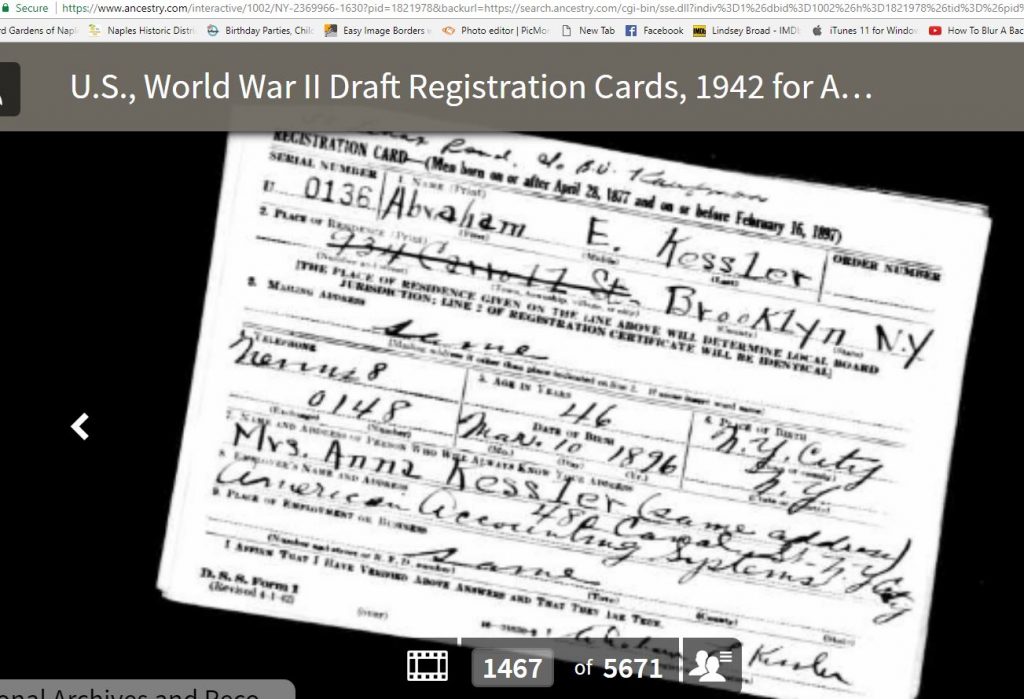
Abe got along well with his brother, Morris, but was not close to his sister, Edith. Although they were close, Abe and Morris did not see each other too often. Anna came from a large family and had 8 siblings. Abe probably spent more time with Anna’s family than he did with his own.
Professional Career
He developed a company called The American Accounting System, located at 480 Canal Street. He worked in and around Chinatown and his Chinese name was “Keslee” as he was known to his clients. He developed an accounting system that specialized in bars (speakeasies) and eateries. Speakeasies were private, unlicensed bars during the prohibition period. The office was later located at 405 Broadway.
He was described by a nephew as clever and well-respected in the Chinatown community. Abe was a registered NYS Public Accountant (PA), a designation for people who were not CPAs, The designation is no longer recognized.
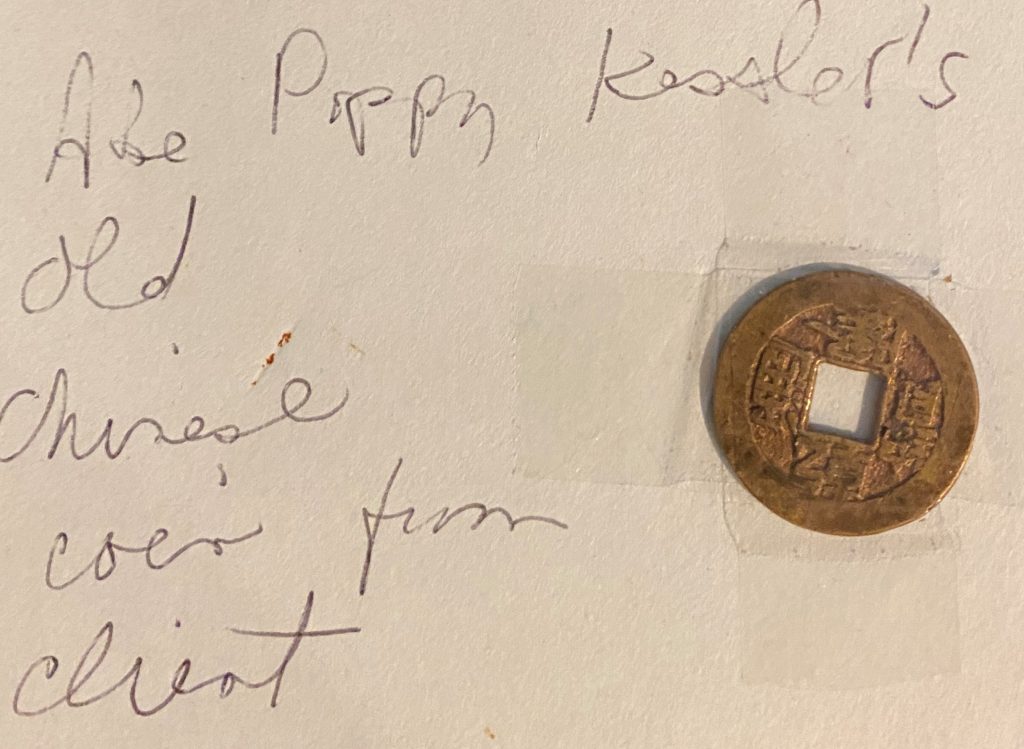
True to his adventurous spirit, in 1936, Abe flew on the first non-stop flight from New York City to Chicago on a business trip. The trip took about 4 hours and cost about $445.25 each way.
To work, he always wore shirts with stiff, removable collars, which were washed in Chinese laundries. The removable collar could be washed more frequently than the entire shirt so the shirt would last longer.
He wore straw hats in the summer. He wore his hat even while working. A great-nephew, Marty, Abe’s sister Edith’s grandson, remembers that he once asked Abe why he always wore a hat. Abe replied that that way, if anyone came to the office that he didn’t want to deal with, he could say he was just leaving!
Abe’s nephew, Stewart, his brother Morris’ son, doesn’t remember much about his Uncle Abe Kessler other than visiting his office a few times in Chinatown. He remembers the guitar. Abe also played the mandolin, which Harold, another grandson still has. His grandson, Art, also remembers visiting the office in Chinatown. Abe would always take his grandson out for lunch to a Chinese restaurant.
Another nephew, George, remembers that whenever they went out to lunch, Abe never paid. They owner would pick up the check. His nephew, George, also served as his attorney. George said that Abe had accountants who worked under him and was also a money lender. One of their biggest clients was the Hunan Association on Chermerhorn Street.
According to his grandson, Steven, stories were that in Chinatown when Abe would walk down the main streets many Chinese individuals recognized him and gave an honorable
courtesy or bow.
One time Abe, when Steven was in dental school at NYU, invited Steven to a high-end Chinese restaurant that had huge marble tables and walls that were dark and elegant. The owner, besides having that restaurant, also was a shrimp importer, so he served Abe and Steven the freshest shrimp they could have had.
After Anna
Abe’s wife, Anna, died June 18, 1943. After her death, his daughter, Florence, was asked to leave the house by her father. She then went to live with her sister, Esther. Her sons believe that this act negatively affected her feelings towards her father for the rest of her life.
Abe still must have supported both of them as Esther went to art school at the Pratt Institute, and Florence went to the Stern Business School at New York University.
Following in his footsteps, his daughter, Florence, studied accounting and worked for her father. Abe and his daughter, Esther, were both known to be difficult people.
After Anna died, Abe became a “woman magnet” and eventually married a woman named Edith Davis, but they ultimately divorced. While married, they lived in the Fifth Avenue Hotel. Many years later, Abe had a room in the Salvation Army Residence in Greenwich Village. His grandson, Art, used to visit him there in the early 1980s. Abe was very happy living there. Art would say his grandfather was a bit of a Bohemian.
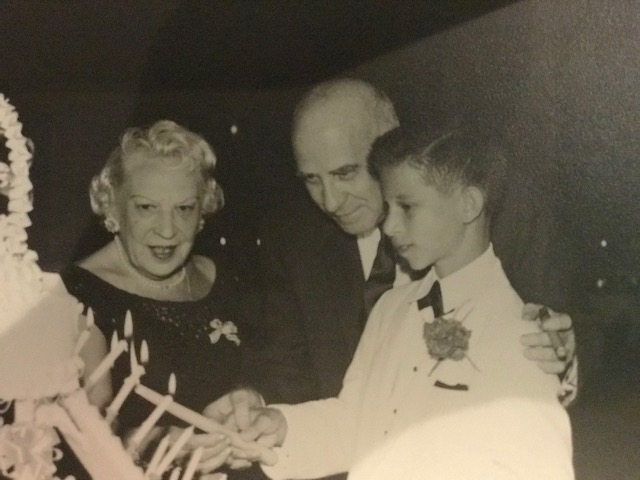
Grandpa Abe
The daughter he put up for adoption married Bernard Blieden in September of 1945. They had 4 children, 3 girls and 1 boy, but Abe never knew them, or they, him.
His daughter, Esther, married Barney Kaufman, a life guard she met at one of their family summers in the Catskills. Both Barney, a trained lawyer, and a nephew of Anna’s, Billy Dittenmeyer, worked for Abe. Billy, eventually took over the business. Esther applied for a marriage license in Sept. of 1940. Barney and Esther had two children, a son, Michael, who became estranged from the family, and a daughter, Andrea (d. 2019).
His daughter, Florence, married Alvin J. Cronson, a psychiatrist. They applied for a marriage license on October 13, 1945. They had 3 sons, Arthur, Harold and Steven.
When Arthur was born, Florence and her husband were living in San Antonio, Texas. Abe traveled there by train, and once there, successfully ran around trying to arrange a Bris for his new grandson.
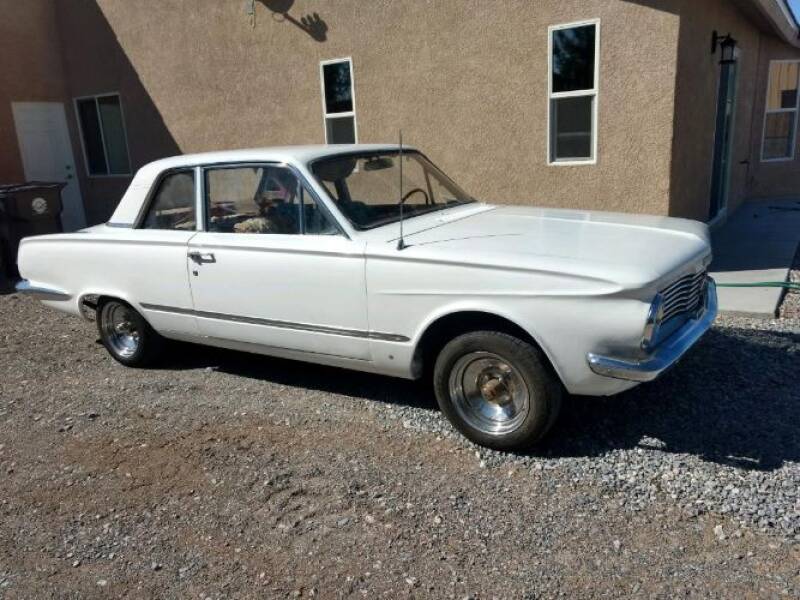
Abe was called Poppy by his grandchildren. His grandson, Art, adored his grandfather. Art remembers that his grandfather gave his grandchildren $5 each every time he visited them. This was always appreciated. Poppy used to say “holy ginggo” when he was pleasantly surprised. Art also remembers going to a Dodger’s Baseball Game at Ebbets Field with Poppy and his father. He was only about 5 years old so he does not remember anything else about that day. Abe had a white 1964 Valiant that he sometimes left in front of his grandson’s house in New Rochelle. The Valiant he drove had push button gears instead of a stick shift which he liked to point out and show off.
Abe enjoyed bringing Chinese food to the grandchildren in New Rochelle which got them to appreciate Chinese food. His grandsons, Harold and then Steven, used to play guitar or harmonica with their grandfather in the lower part of the home and named it the barnierolle for the basement. Steven used to ask Abe if he could keep his old wooden cigar boxes when they were empty and he may still have one to this day!
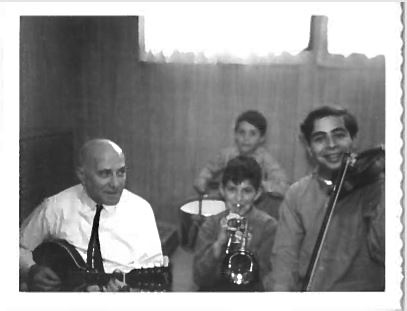
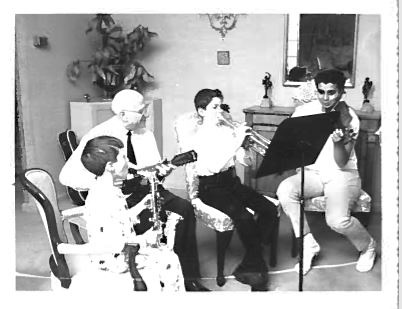
In about 1966, Poppy traveled to Holland by himself. He got sick while there and has nursed by a Dutch woman, who got him well enough to return home. She had a daughter who Poppy said wanted to meet Arthur. They never met one another. Arthur does not remember why Poppy went to Holland.
One time when Steven was traveling with his wife to Vancouver,
BC for her business trip, Steven went to a busy Chinese restaurant on a small island before a flight out the next day, He was by himself as his wife had to fly out a day earlier. Steven mentioned to the Maitre De that his grandfather helped Chinese families start restaurants in America. When Steven said his grandfather’s Chinese-like name Kesli ,the person seemed like they knew him all the way on the west coast of British Columbia. It seemed like immediately they found him a table and put them at the head of the line and got
him seated in a hallway. The place was so busy so he got out much
earlier than would have happened otherwise.
Abe liked having a nightcap, especially a mint chocolate liqueur from
Holland that came in a sculpted porcelain blue and white design bottle.
Steven, when an adult, got his own version of the nightcap, and also had an occasional single partial shot.
Interests and Hobbies
On his 50th anniversary of his City College graduation, Abe gave a gift to his alma mater of $1,000. Years later, he went ballistic when City College went to open admissions and would not give them another dime.
Abe was a bit of a bigot so he wasn’t a saint, but according to his grandson, Art, the grandchildren he never knew would have loved him. As an example of how he could be bigoted, once in a deli, he did not want the black employee to slice anything, since he couldn’t tell if his hands were clean.
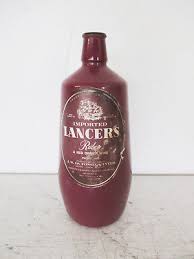
He was very partial to blonde females, and he adored Art’s wife, Susan, and his grand-daughter, Andrea (Esther’s daughter).
He drank Lancers wine, is a Portuguese wine that is still made as of 2020, and liked to smoke cigars.
In addition to playing the ukulele and mandolin, he enjoyed writing music. He wrote the music for a song that actually got published, entitled “If I Was Good Enough for Uncle Sam I’m Good Enough for You.” The words were composed by Edith Davis Kessler. Another song Abe wrote was titled “Molasses, Sugar and You” what could be sweeter than that, my honey bee is sweeter than that. The words are not exact but very close.

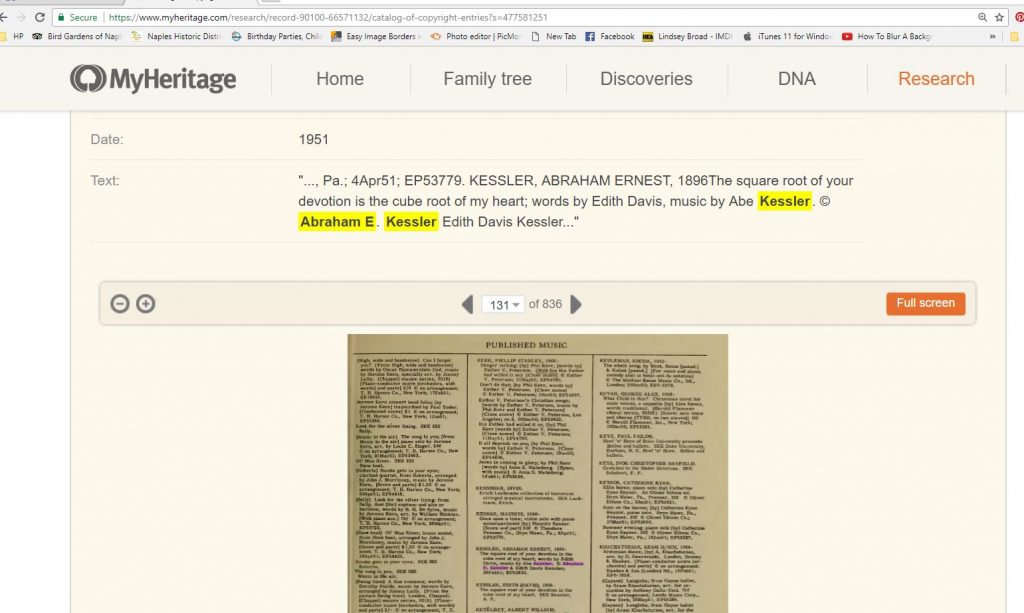
He also told his grandson, Steven, that he had played the piano for the silent films in the movie houses.
End of Life
Abe eventually moved to Los Angeles to be with Esther, who was now living in California. Esther looked after her father, but eventually moved him into an Old Age Home near her.
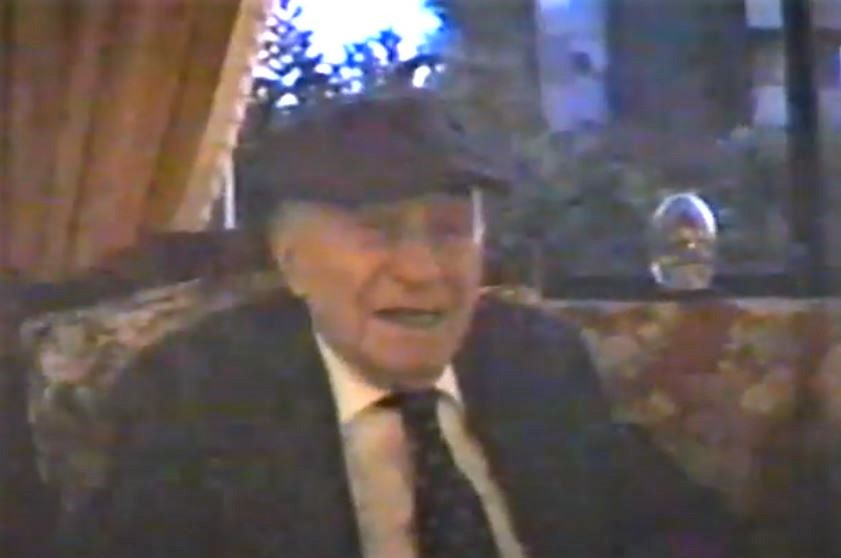
Abe eventually had glaucoma, which was not treated. Over the years, he came down with both pneumonia and shingles. During his last years, he also suffered from some dementia.
Abe died from old age in Los Angeles on Feb. 11. 1991, at about 93 years old. Abe Kessler is buried at Wellwood Cemetery, Bethpage, New York, next Anna, his first wife.
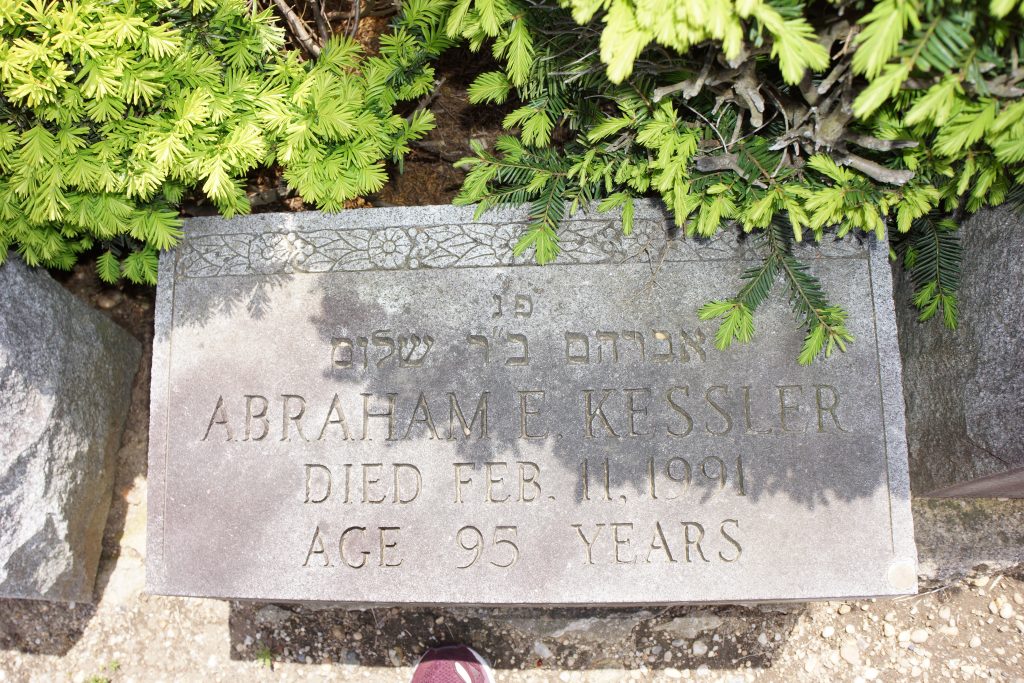
Descendants
Abraham Ernest Kessler had 3 daughters, even though one was put up for adoption. From his 3 birth daughters he had 9 grandchildren, 14 great-grandchildren and as of 2020, 9 great-great-grandchildren.
What is amazing is that, as of March 2020, there are 32 descendants of Abe and Anna running around today. Abe would be impressed!
Additional Information
For more details about the lives of his parents, his siblings, and his children, please visit the other Kessler pages under the Kessler menu on this website.
For more details about his first daughter, May, look under the May and Bernie section.
*In February of 2017, Abe’s birth grand-daughter, Tara, found out that her mother had been adopted as a baby. Tara took a DNA test with 23andme.com to try and learn what her real nationality was. When the results came back, she noticed a new first cousin and contacted him. Art accepted her into the family and the two of them soon became good friends in addition to being birth cousins. What a bonus! In addition to learning about her nationality, she discovered a whole new family and set out to learn as much about them as she could.
Sources:
- The Heat Wave of 1896 And The Rise Of Roosevelt https://www.npr.org/templates/story/story.php?storyId=129127924
- Cliff Dwellers (painting) By George Bellows – secondat.blogspot.de, Public Domain, https://commons.wikimedia.org/w/index.php?curid=5138000
- Boys High School https://en.wikipedia.org/wiki/Boys_High_School_(Brooklyn)
- Speakeasies during Prohibition http://prohibition.themobmuseum.org/the-history/the-prohibition-underworld/the-speakeasies-of-the-1920s/
- Midway O’Hare Airport History https://www.flychicago.com/business/CDA/Pages/Midway.aspx
- Travel + Leisure (how much did flights cost?) https://www.travelandleisure.com/airlines-airports/history-of-flight-costs
